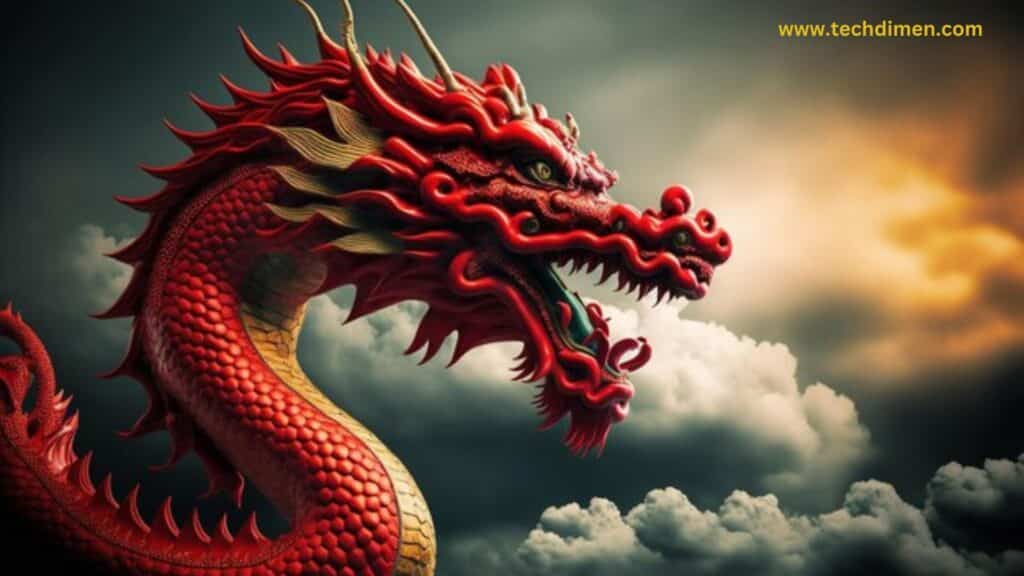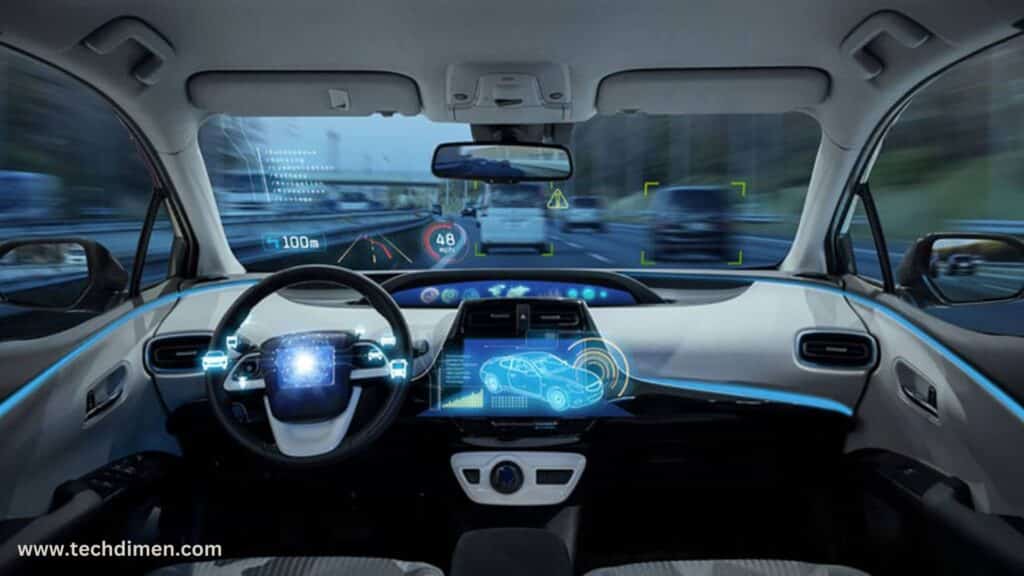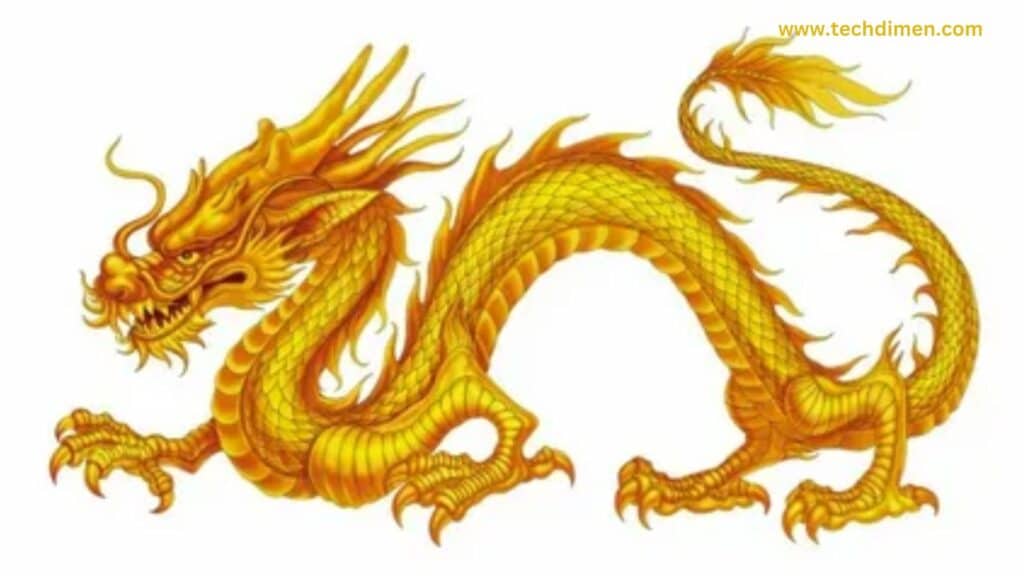China has reimagined the dragon as more than a traditional emblem it isnow a potent representation of national tech power. From breakthroughs in brain-machine communication to compact, efficient space vehicles, “China Dragon technology” signifies a bold vision for the future.This article examines how China is deploying brain interface breakthroughs, private sector rocket development, and AI expansion to become a dominant force in emerging technologies.
Why the Dragon Theme Resonates in Tech Circles

In Chinese culture, the dragon conveys authority, intelligence, and transformation. By adopting this iconography, tech ventures tap into cultural significance and national identity. It’s not a coincidence; branding with “dragon” signals technological ambition and capability.
The label spans a diverse ecosystem of projects united under national strategies like “Made in China ” that all push the boundaries of what is possible, and often much faster than their global peers.
China Dragon technology Advances in Mind Computer Technologies
The global race in brain-computer interfaces (BCIs) is not just playing out in the West. Leading Chinese universities and startups like Xinzhida Neurotech are producing neural systems that translate brainwaves into actionable data with impressive accuracy.
Researchers at Tsinghua University have engineered implantable processors that convert brain signals into commands. These systems are enabling paralyzed patients to regain motion and amputees to maneuver robotic limbs. While Neuralink focuses on invasive procedures, many Chinese firms prioritize external wearables, which are gaining adoption in fields like logistics, aviation, and education.
Clinical applications are growing. Electroencephalogram (EEG) headsets are helping patients interact with assistive devices purely through thought. Hospitals across major cities are now including these systems in therapy programs.
Practical Uses: From Labs to the World

China’s ability to fast-track innovation from research to deployment is a key advantage. While Western nations often face lengthy regulatory processes, Chinese developers benefit from streamlined approvals.
New devices are monitoring driver alertness, student focus, and employee mental fatigue sending live data to AI platforms that offer personalized feedback. These tools are reshaping performance tracking in this time.
Jielong and Smart Dragon Launchers: Pioneering Low Cost Access to Orbit
Private space ventures like China Rocket Co. have made dramatic gains in launch vehicle technology. The Smart Dragon-3 and Jielong-3 rockets stand out for their reliability and affordability.
Jielong-3 is a solid-propellant launcher capable of transporting 1.5 tons to low Earth orbit. These rockets are factory-produced, quickly assembled, and ready for launch at short notice ideal for commercial satellites and defense operations alike.
These systems also align with China’s dual purpose philosophy, capable of supporting both civilian and military missions. Their design enables responsive, cost effective deployment.
Strategic Advantage of Ocean Based Launch Pads
China’s use of maritime launch platforms like Hai Long gives it an edge. Launching near the equator enhances orbital efficiency thanks to Earth’s spin, while avoiding the logistical and safety issues of land based sites.
Hai Long is a stabilized marine platform designed to withstand oceanic movements. It enables flexible, secure rocket deployments ideal for both commercial space ventures and classified payloads.
Sea launches also help China maintain launch secrecy, enhancing its strategic capabilities in both the civil and defense sectors.
AI Startups Driving Technological Independence

Artificial intelligence is at the heart of China’s digital strategy. Companies like Megvii, SenseTime, and iFlytek are developing deep-learning models with applications in healthcare, surveillance, education, and more.
iFlytek’s speech recognition is used in classrooms and courtrooms alike. SenseTime’s visual recognition powers urban monitoring and transportation management. These firms are incubated within government supported zones that combine research, testing, and industrial-scale production.
Innovation hubs in cities like Shenzhen and Hangzhou fuel this ecosystem, providing financial support and infrastructure to accelerate growth.
Campus Incubators: Launchpads for Future Leaders
Academic incubators are a cornerstone of China’s innovation landscape. Tsinghua’s X Lab equips BCI innovators with coding libraries, lab facilities, and world test environments. Similar initiatives exist across Shanghai, Guangdong, and Zhejiang.
These programs do not just offer mentorship. They fast track participants into venture capital funding and procurement contracts. Many alumni have developed technologies that straddle commercial and military functions.
Fusion of Civil and Defense Technologies

The Military Civil Fusion strategy aims to adapt commercial breakthroughs for military use. AI designed for warehouse automation is now being tested for battlefield logistics and drone control.
BCIs used to assess attention in schoolchildren are now tools to evaluate soldier performance under stress. Algorithms initially created for farming drones are reprogrammed for reconnaissance and targeting.
In 2023 alone, China’s defense sector filed over a thousand patents related to artificial intelligence underscoring its investment in tech self-reliance and battlefield superiority.
What the Future Holds for Dragon Themed Innovations
China’s long-term plan includes reusable launchers in the Jielong series and an expanded maritime launch network. BCI researchers are moving into cognitive navigation where users can direct virtual environments and mechanical devices using neural input.
Chinese AI firms are also targeting global markets, offering space access services, medical neuro devices, and advanced surveillance tools to nations in Africa and Southeast Asia.
China Dragon Tech is more than branding. It is a deliberate and integrated approach to advancing tech across multiple sectors, with momentum and ambition that are hard to match.
Here are some relevant and in-depth FAQs for your article on China Dragon Technology. These are designed to align with user search intent and reinforce SEO by integrating your key terms naturally.
FAQs :China Dragon technology
What Does “China Dragon Technology” Represent?
China Dragon Technology is a term that captures the country’s most ambitious tech projects branded with the word “dragon.” It refers to a network of innovations in fields like brain computer interfaces, artificial intelligence, and aerospace especially launch vehicles like the Jielong-3 and Smart Dragon-3. The dragon branding signals national pride, strategic intent, and high tech excellence.
How Are Chinese Brain-Computer Interfaces Different from Neuralink?
Unlike Neuralink’s focus on implanted brain chips, many Chinese brain-computer interface platforms rely on non-invasive systems, such as EEG headsets. Institutions like Tsinghua University and startups like Xinzhida Neurotech have developed BCI devices for real-world use in healthcare, education, and defense. These systems detect brain signals externally and convert them into usable commands without surgery.
What Is the Role of Smart Dragon-3 in China’s Space Ambitions?
Smart Dragon-3 is a lightweight solid-fuel rocket designed for quick, affordable satellite launches. Created by China Rocket Co., it offers efficient low Earth orbit deployment with minimal ground infrastructure. It supports China’s broader strategy to expand commercial and dual-use space access.
Why Does China Use Sea-Based Rocket Launches?
China deploys rockets from sea platforms like Hai Long to gain orbital efficiency by launching closer to the equator. Maritime launches also reduce risks to population centers and allow more secrecy especially for defense-related missions. This approach supports both commercial expansion and military readiness.
Which Universities Drive Innovation in BCI and AI?
Universities such as Tsinghua, Zhejiang, and Shanghai Jiao Tong lead China’s innovation in brain-computer interfaces and artificial intelligence. Their incubators support researchers with resources, test environments, and fast-track funding opportunities. Many startups emerge directly from these programs, blending academic research with real-world application.
What Is Military-Civil Fusion and Why Does It Matter?
Military-Civil Fusion is China’s policy to adapt civilian technologies for military use. For example, BCI headsets used in classrooms may also be tested for monitoring soldier fatigue. Drones built for agriculture might be reprogrammed for reconnaissance missions. This approach helps China convert commercial breakthroughs into battlefield tools quickly.
Which AI Startups Are Key Players in This Ecosystem?
Leading AI companies in China include SenseTime, Megvii, and iFlytek. These firms work on facial recognition, speech processing, and machine vision technologies. Their systems are widely used in law enforcement, healthcare diagnostics, and urban infrastructure. Many of these companies benefit from government-backed innovation zones.
How Is China Dragon technology Preparing for the Next Phase in Space Technology?
China plans to build reusable launch vehicles and increase its fleet of Smart Dragon and Jielong rockets. It’s also expanding its maritime launch network and offering international launch services. These efforts aim to make China a major provider of orbital transport and space infrastructure.
What Are the Real-Life Uses of Brain-Computer China Dragon technology?
Brain-computer technologies are already making an impact. Some applications include:
- Assisting stroke patients with robotic rehabilitation
- Measuring attention levels in students or workers
- Controlling prosthetic limbs using thought alone
These systems are undergoing clinical trials and pilot programs in hospitals and universities.
How Does China Dragon technology Fit Within China’s National Strategy?
Dragon-branded technologies align closely with national blueprints like Made in China 2025, which prioritizes homegrown innovation in key sectors. Whether it’s space access, neurotechnology, or AI, these projects aim to reduce dependence on foreign tech and build globally competitive solutions.
Conclusion:China Dragon technology
Whether sending rockets to orbit or decoding neural signals, China’s dragon-marked initiatives are reshaping global innovation. With strong state backing, academic support, and commercial scale, the country is setting the tone in next generation tech.

Jhon AJS is a tech enthusiast and author at Tech Dimen, where he explores the latest trends in technology and TV dimensions. With a passion for simplifying complex topics, Jhon aims to make tech accessible and engaging for readers of all levels.







